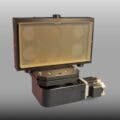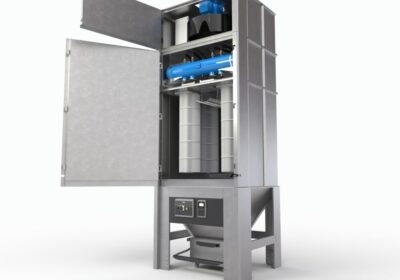~ Advanced DC motor design is crucial for space projects ~
What if we could generate solar power day and night, 365 days a year? A new project sets to find this out with its innovative space-based solar farm concept. Here, Dave Walsha, sales manager at drive system supplier EMS, explores the DC motor technology making ambitious space projects possible.
Oxfordshire-based Space Solar is at the helm of a new project set to transform the world of renewable energy as we know it. The company plans to build a satellite-based solar farm in a high earth orbit, beaming the power generated back to Earth. And it expects to deliver an affordable and scalable model of the technology within just twelve years.
How does it work?
The project relies on the construction of a helix-shaped satellite, more than ten times bigger than the ISS. A system of mirrors will concentrate solar rays directly onto the satellite’s solar panels, which generate electricity. This electricity is then converted into high frequency radio waves and directed to a receiver back on Earth.
It’s a setup that sounds like something out of a sci-fi movie. But thanks to the increasing viability of space launches and travel, we’re likely to see the announcement of even more projects like this one.

Making it happen
However, as more businesses look to the unique benefits space can offer, pressure is increasing on the manufacturing sector to produce and supply the hardware sophisticated enough to support these concepts. Semiconductor technology is one example. Experimentation with novel materials such as gallium nitride is driving performance enhancements within the sector. Gallium nitride-based semiconductors may be particularly advantageous for telecommunications devices in space, as they allow for much higher signal strength and data transmission rates than the electronics being used currently.
Another example is DC motor technology. While easy to overlook at first, these often-crucial components play a variety of roles in allowing space satellites to operate autonomously and remotely. This includes the movement of robotic arms, which may be used for self-maintenance or assembly in space. In the solar farm satellite, micro drives may be used to precisely adjust the positioning of the mirrors and solar panels for optimum power generation.
But motors in space face numerous challenges. A robust design is crucial to ensure the motor can survive the extreme vibrations created at launch and the harsh conditions of space. Weight is another key concern: the lighter the payload, the lower the cost of the launch. Extremely variable temperatures can prove challenging for some materials. And there’s also the long-term reliability to consider. The chances of being able to dispatch a maintenance engineer to repair or replace a faulty motor in space are slim.

Space design challenges
To avoid these problems, selecting the right DC motor for the application to begin with is essential. A popular choice for space-based applications is a brushless DC motor. These offer enhanced speed control and efficiency compared to brushed motors. And the removal of the brushes reduces the number of potential failure points for a more reliable, long-lasting motor.
Another consideration when searching for a DC motor partner is to find one with prior experience in delivering to the space sector. Here, EMS has significant expertise, having supported multiple space projects with custom drive system solutions. This includes the BAMMsat-on-BEXUS satellite, a biological research experiment aiming to help support future human spaceflight. As the exclusive distributor for leading DC motor manufacturers, including FAULHABER, as well as operating its own custom manufacturing facility, EMS is perfectly poised to specify and supply drives to match the demands of space.
As space travel becomes more viable and climate change concerns increase, we’re likely to see a growing influx of companies look to the stars to find solutions for the world’s biggest issues. But project success will be highly dependent on the underlying technology. Therefore, it’s imperative that manufacturers take the time when selecting component parts to ensure that they have all the necessary attributes for successful long-term implementation in space.








